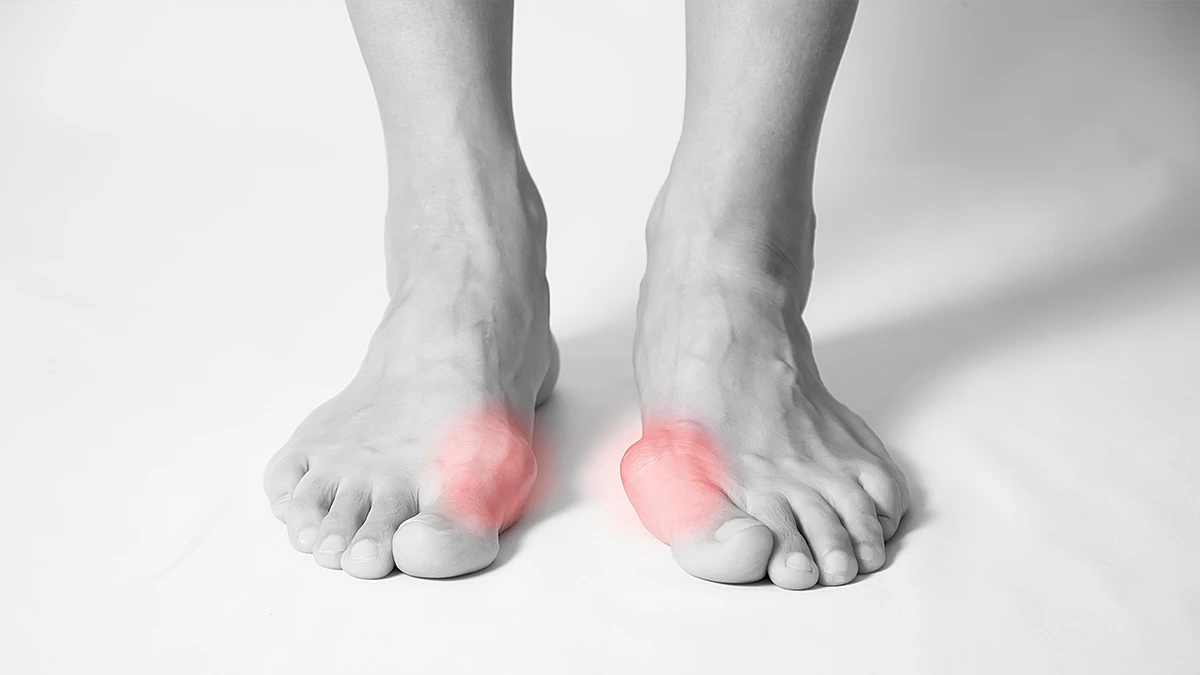For many patients, nonsurgical treatment can help alleviate bunion symptoms and slow progression. Proper footwear is one of the most effective conservative approaches – shoes with a wide toe box and soft materials reduce pressure on the bunion. Custom or over-the-counter orthotics can help redistribute weight and improve foot mechanics, while toe spacers and bunion splints may provide temporary relief by encouraging proper toe alignment. Taping or padding the bunion can also reduce irritation and pain. Additionally, stretching and strengthening exercises for the foot and toe muscles can improve flexibility and support the joint, while anti-inflammatory medications or corticosteroid injections may help manage pain and swelling.
When conservative measures fail, surgical intervention may be necessary, especially if the bunion causes persistent pain or interferes with your daily activities. Minimally invasive surgery (MIS) techniques involve small incisions and specialized instrumentation to realign the toe with less soft tissue disruption, less pain, and less swelling – often resulting in a quicker recovery. Traditional open procedures correct the bunion with similar principles, but through a much more invasive approach. For severe or unstable bunions, the Lapidus procedure—which fuses the first tarsometatarsal joint—provides long-term correction by addressing hypermobility at the root cause (the first tarsometatarsal joint). Each surgical option has varying recovery times and risks, and the best approach depends on the severity of the deformity, patient activity level, and ultimate goals for correction.
Choosing the right treatment depends on factors such as pain severity, lifestyle, and long-term foot health goals. Non-surgical options are typically recommended as the first line of treatment, especially for mild to moderate bunions. Surgery is reserved for cases where conservative methods fail or the deformity significantly impacts mobility and quality of life. Dr. Neary can assess the bunion’s progression, discuss treatment goals, and recommend the most appropriate approach. Whether opting for conservative management or surgical correction, early intervention and proper foot care play a crucial role in maintaining comfort and preventing complications.
Surgical Journey

How to Prepare for Bunion Surgery?
Preparing for bunion surgery involves several important steps to optimize recovery and outcomes. Patients should follow Dr. Neary’s preoperative instructions outlined in the surgery packet, which may include stopping certain medications like blood thinners, ensuring any underlying medical conditions (such as diabetes) are well controlled, and modifying other health factors to promote better healing. It’s also essential to arrange for transportation home after surgery and plan for post-op assistance, especially in the first few days. Preparing the home environment by setting up a comfortable recovery space, stocking up on easy-to-prepare meals, and securing necessary mobility aids like crutches or a knee scooter can make recovery smoother. Wearing loose clothing on surgery day and ensuring fasting guidelines are followed (if required for anesthesia) will help avoid complications and ensure a smooth surgical experience.
What to Expect on Surgery Day
On the day of bunion surgery, you should arrive at the surgery center or hospital as instructed, typically fasting per anesthesia instructions. After check-in you will be taken to the preoperative area, will change into a surgical gown, and have your vitals monitored. The surgical team will review the procedure, confirm the surgical site, and administer anesthesia – most commonly a leg or ankle block combined with sedation. Once in the operating room, Dr. Neary will correct your bunion using a minimally invasive technique involving bone realignment and screw fixation. The procedure usually takes about 45 minutes to an hour, after which you are taken to the recovery area to be monitored as the anesthesia wears off. Postoperative instructions will be provided, including weight-bearing restrictions, pain management, and wound care, and once stable, you will be discharged with a surgical shoe, ready to begin your recovery journey.